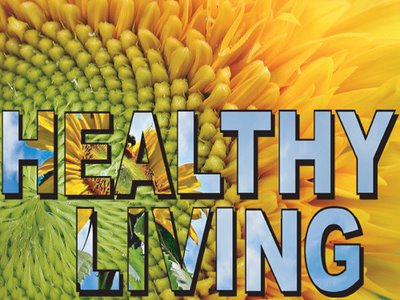Many natural remedies have not been approved by the FDA yet have had success with many people. We at Healthy Living are just going to give you the treatment and claims of some of these Natural cures. In the end you have to decide whether it is right for you. Today's supplement is Arnica.
Arnica (arnica montana L.),
known also as leopardsbane, wolfsbane, and European arnica, is a member of the Compositae (Asteraceae) family. It is a yellow-flowered aromatic herbaceous perennial, which tends to grow in meadows and light woodland. Hardy, flowering in early summer. Hairy leaves in basal rosette. Arnica is a perennial that grows to a height of 1 to 2 feet with yellow-orange flowers similar to daisies. Stems are round and hairy. Leaves are bright green. Arnica montana is a perennial flowering plant native to southern Russia and other mountainous areas in Europe. There are several North American species of arnica, including A. fulgens, A. sororia, and A. cordifolia. In North America, arnicas grow in woody areas of the plains region and the Pacific coast, northward to arctic Alaska. Arnica montana has a long history of use in herbal healing. Arnica is one of the best remedies for external local healing and may be considered a specific when it comes to the treatment of bruises and sprains.
Active constituents of arnica
Arnica flowers contain a number of sesquiterpene lactones including helenalin and related compounds. Acetic, isobutyric, and other carboxylic acids have also been identified. The sesquiterpenoid lactone helenalin and the sesquiterpenoid lactones 11alpha, 13-dihydrohelenalin and chamissonolid are reported to inhibit the activation of the transcription factor NF-kappa B by directly modifying this factor. Sesquiterpenoid lactones, including helenalin and dihydrohelenalin, possess the pharmacologic properties responsible for arnica's anti-inflammatory and analgesic effects. The flowers also contain caffeic acid and its derivatives and an essential oil containing fatty acids, carotenoids, and thymol derivatives, along with the coumarins umbelliferone and scopoletin. Arnica also contains flavonoid glycosides (such as apigenin, luteolin, hispidulin, kaempferol and qercetin), alkaloid, volatile oil, tannin, and isomeric alcohol, including arnidio and foradiol. The essential oil in the aerial parts contains mainly fatty acids, n-alkanes, thymol derivatives and mono- or sesquiterpenes. The fower heads of arnica montana contain phenolcarbonic acids (chlorogenic acid, caffeic acid, cynarin), umbelliferon, scopoletin and traces of pyrrolizidine alkaloids (tussilagine and isotussilagine). Arnica polysaccharides stimulates the immune system and other constituents keep blood clots from forming.
Medicinal uses and health benefits of arnica
Arnica has been used for many years both internally and externally. Arnica stimulates the circulation and the immune functions of the mucous membranes. External application has been recommended to reduce the inflammation and pain of bruises, aches, and sprains. Arnica has wound-healing, disinfecting and anti-inflammatory properties. It helps to regenerate the tissue and is suitable for the treatment of all injuries resulting from impact, falls, stabs and cuts. Arnica is used topically for a wide range of conditions including bruises, sprains, muscle aches, wound healing, acne, superficial phlebitis, rheumatic pain, inflammation from insect bites, and swelling due to fractures. Arnica is useful as a gargle for mouth and gum infections. Arnica is used in homeopathy following an accident or a shock, as well as for illnesses of the venous or arterial systems. A few drops of arnica tincture added to warm water in a foot bath will relieve fatigue and soothe sore feet. A hair rinse prepared with arnica extract has been used to treat alopecia neurotica, an anxiety condition leading to hair loss. Arnica can be used prior to and immediately after a demanding athletic event to prevent post-workout soreness. Arnica relaxes the tissue and makes it supple and is therefore irreplaceable in the prevention and treatment of sore muscles. Arnica ointment is important for the prevention and treatment of phlebitis.
Side effects, precautions, interactions of arnica
When used frequently or for long periods, arnica can cause contact dermatitis or eczema. Some people may experience stomach discomfort, including nausea and vomiting. Liver and kidney damage has also been reported. Other side effects may include muscle weakness, organ damage, coma and death. Overdose of arnica extract has resulted in poisoning, with toxic symptoms, such as vomiting, diarrhea, and hemorrhage, even death. Use externally with caution, and only in dilute preparations. Arnica should not be used on broken skin, such as leg ulcers. Also, people who are hypersensitive or allergic to the herb should avoid it. Oral use of arnica and topical use of arnica on broken skin and open wounds is considered unsafe because sesquiterpenoid lactones in arnica, such as helenalin, are intensely poisonous and cardiotoxic.
source: vitamin and health supplement guide
General Safety Advisory
~The information in this document does not replace medical advice.
~Before taking an herb or a botanical, consult a doctor or other health care provider-especially if you have a disease or medical condition,take any medications, are pregnant or nursing, or are planning to have an operation.
~Before treating a child with an herb or a botanical, consult with a doctor or other health care provider.
~Like drugs, herbal or botanical preparations have chemical and biological activity. They may have side effects. They may interact with certain medications. These interactions can cause problems and can even be dangerous.
~If you have any unexpected reactions to an herbal or a botanical preparation, inform your doctor or other health care provider
